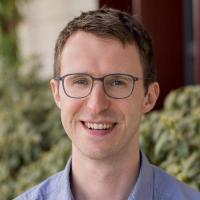SystemX Affiliates: login to view related content.

*To receive email announcements and live stream information for upcoming seminars, please subscribe to the SystemX Seminar/EE310 Mailing list here.
LIDAR can provide detailed spatial maps of an environment, a capability that is essential for applica- tions such as autonomous driving, robotics, building modeling, or augmented reality. Bulky optical elements and moving parts in current LIDAR systems have unfortunately made these systems heavy, expensive, and vibration-sensitive. Solid-state optical devices for the functionalities required for a LIDAR system have therefore driven much integrated photonics research in recent years. For on-chip beam-steering, optical phased arrays (OPAs) have emerged as a promising solution; however, the size and efficiency specifications for an effective LIDAR-OPA design have remained challenging for classical photonics design methods. In this talk, I will present how photonic inverse design methods can improve OPA design. Unlike classical photonic design, inverse design allows for arbitrary device geometries through the use of advanced elec- tromagnetic optimization methods. The extra degrees of freedom these methods provide has resulted in numerous new photonic devices with improved efficiency, reduced on-chip footprint or novel functionali- ties. Leveraging these new capabilities, we demonstrate an OPA design with a larger scanning cone and a smaller operating bandwidth as compared to the classical photonic design solutions.
Dries Vercruysse received the B.S. and M.S. degrees in engineering and Ph.D. in physics from the KU Leuven, Leuven, Belgium, in 2007, 2009, and 2015 respectively. After his Ph.D. he joined IMEC, Leuven, Belgium, as a researcher. In 2016, he received an FWO Pegasus Marie Curie Fellowships for post-doctoral research at Stanford University, and in 2020 he joined Stanford University as a research engineer.


